43 Interesting Facts You Didn’t Know About Chile | Unique Facts from My Month in Chile

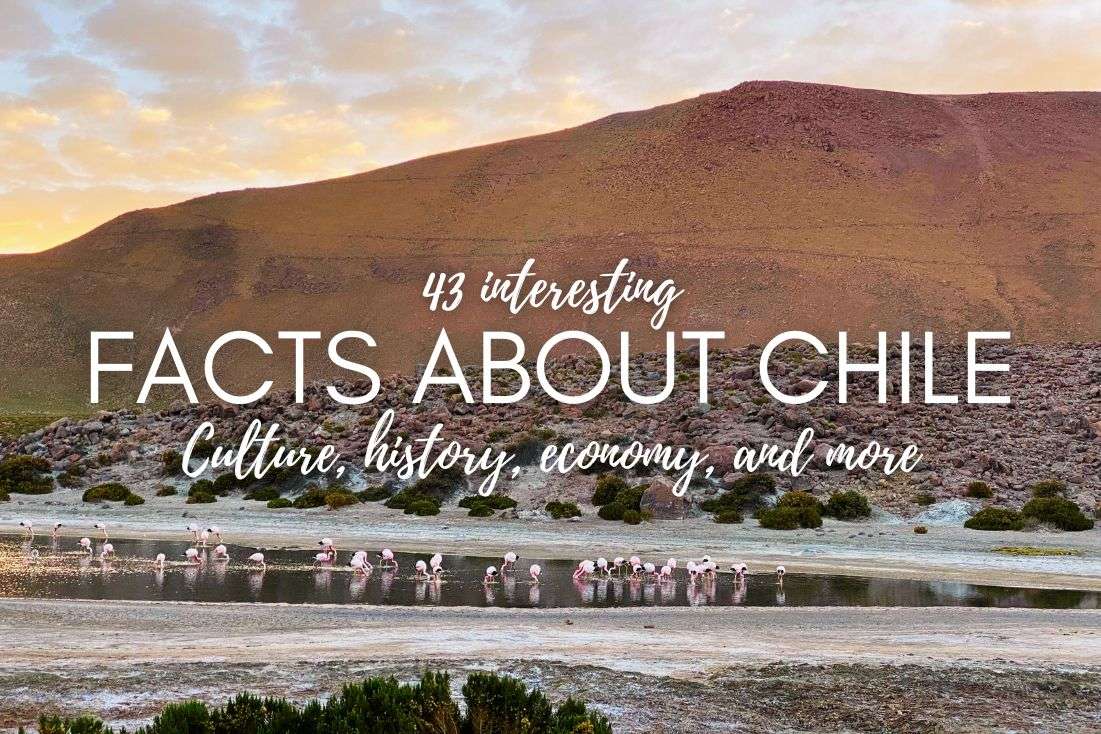
Chile doesn’t get the attention it deserves! At least that’s what I think. It’s an incredibly diverse country that is (at least in Europe) wrongly perceived as some third-world country. And that’s far from reality. To change your perspective regarding Chile and to give you some background knowledge of Chile, I put together this list of 43 interesting Chile facts about its culture, geography, history, economics, and more.
I usually include a list of FAQs at the end of my articles, but here, I’ve decided to add some unique records that Chile has under its belt. Check them out!
Oh, and it’s not just me! National Geographic has repeatedly included Chile in its lists of top travel destinations, praising the Atacama Desert, Patagonia, and the vibrant culture of Santiago. It’s one of the most recommended places to visit worldwide. I don’t want to say I told you so, but I told you so! Learn more about Chile.

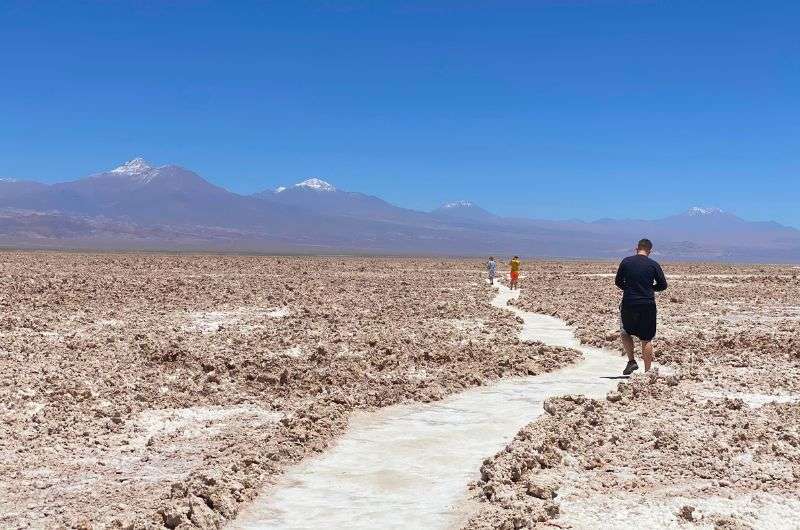
I have gathered 43 interesting facts about Chile for you
Chile geography facts
1. Chile is (almost) the longest country in the world
Chile stretches over 4,270 km (2,653 miles) from north to south, which makes it almost the longest country in the world. Technically, that title belongs to Russia, which is two times longer from east to west (around 9,000 km/5,600 mi). Unless you want to call Russia the fattest country instead!
At 4,270 km (2,650 miles) long, Chile spans roughly the same distance as a straight shot from Seattle to Miami in the U.S. or from Lisbon to the northern tip of Norway in Europe.
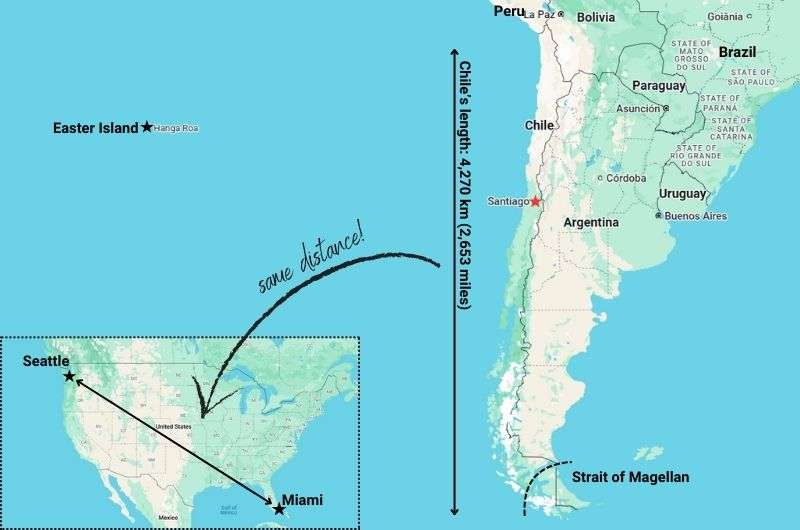
This is how long Chile is
2. Chile is one of the narrowest countries in the world
Chile is one of the narrowest countries in the world, with an average width of only 180 km (112 miles) and 64 km (40 miles) at its slimmest point. ts narrowest point is widely considered to be near Illapel in the Coquimbo Region, roughly 90 km (56 miles) across from west to east.
You’ll often see this cited as the minimum width of continental Chile. Of course, in certain southern fjord areas (where the coastline fragments into islands), the notion of “width” becomes more complex, but for the main continuous landmass, Illapel’s span is the narrowest.
I actually wanted to get a feel for this one day so I decided to test it out: I drove from the borders with Argentina to the Pacific Ocean and I can confirm—it really does feel like the narrowest country!
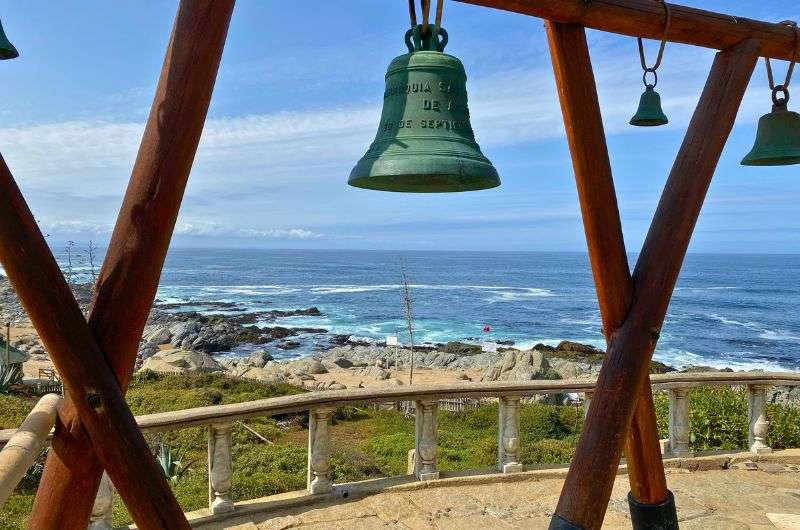
Sea view
3. Chile has half the population of Canada
With only 18 million people, Chile’s population is like half of Canada’s, and the majority of people like in the Santiago area. Whenever I was in other parts of Chile, the country felt empty!
4. Chile has 9 sub-climates
Chile has 9 sub-climates according to the Köppen Climate Classification, offering something for everyone. From the bone-dry Atacama Desert to the lush rainforests of the Lakes District, and the icy tundras of Patagonia, Chile is a weather buffet. Pack for sun, rain, and snow—you might use it all in one trip (sometimes in a single day)!
5. Central Chile is like South America’s California dream
Did you know Central Chile is like the 'California of South America,' with its Mediterranean climate and vibrant wine country? This region is home to some of the world’s best vineyards, producing award-winning wines like Carménère and Sauvignon Blanc. I’m more of a beer-lover, but even I could appreciate the picturesque landscapes of rolling hills and sunny weather. Those pair well with a nice Sauvignon whether you’re a wine lover or an outdoor enthusiast.
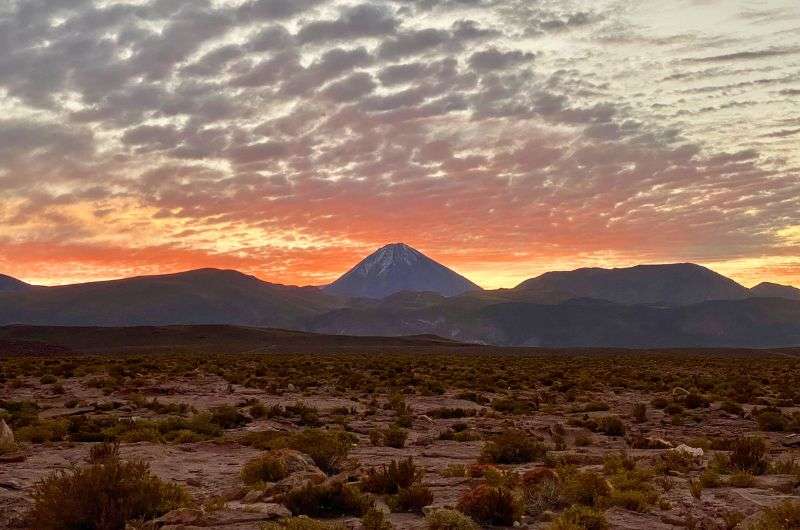
Sunsets with volcanoes in the background
6. Easter Island is a special territory of Chile
Easter Island is officially a special territory of Chile, even though it’s 3,540 km (2,200 miles) off the Pacific Coast of Chile and the flight takes around 6 hours. Since it’s so far from everything, it’s really isolated, almost like it’s its own little planet. I get why it’s called the “loneliest island in the world”.
Sometimes, all you need to do is take the first step... I've filtered out the best hotels in Chile for you
Save it for yourself to come back to later, or share with your friends on social media!
Chile culture facts
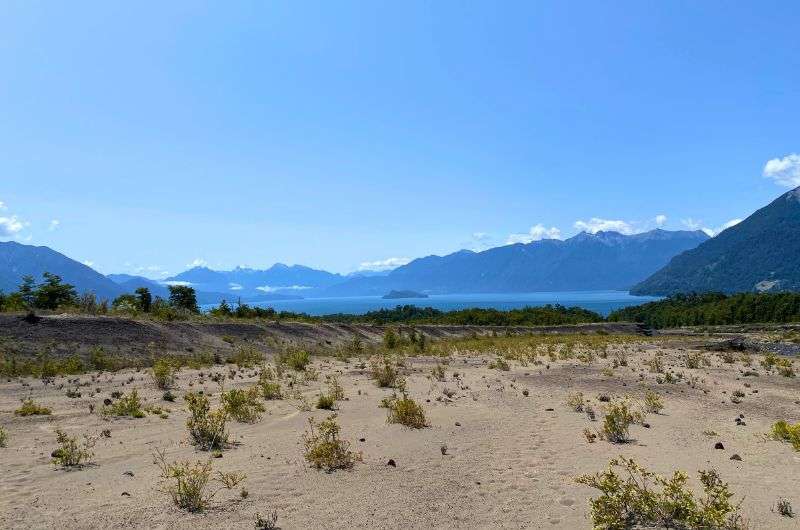
What culture is in Chile?
7. Chileans can’t skip their “once”
I noticed Chile has something in commom with England: a late afternoon “teatime.” It's a tradition called once. This light meal is served between 5–9 p.m. and in many families acts as a replacement for dinner. It usually consists of tea or coffee with bread, pastries, or sandwiches. Some Chileans still have a heartier dinner later on, but some just stick to their once.
The name “once” (meaning “eleven” in Spanish) is said to have originated as a code word for a sneaky glass of aguardiente (a liquor with eleven letters) back in the day.
8. Pisco is Chile’s national liquor with a holiday of its own!
Pisco is Chile’s national brandy, often served as Piscola, a beloved cocktail made with Pisco and cola. It’s so iconic that Chile declared February 8 the official “Day of the Piscola.” Fun fact: Chile and Peru have an ongoing (and friendly) rivalry over who invented Pisco first! Read more about food and drinks in Chile.
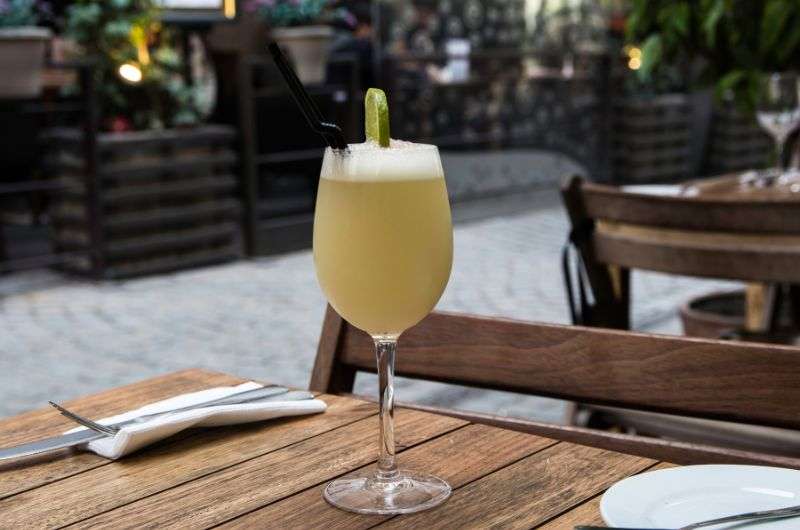
Pisco sour
9. Moby Dick was inspired by a Chilean incident
Herman Melville’s classic novel “Moby Dick” by was inspired by the sinking of the whaling ship Essex in 1820. While this event didn’t occur directly in Chilean waters, the ship’s crew ended up stranded near the Chilean coastline. Melville later explored the region and drew inspiration for his novel from tales shared by locals.
Chile has 6 UNESCO World Heritage Sites
10. Chile boasts 6 UNESCO World Heritage Sites:
- Churches of Chiloé—Unique wooden churches blending European and indigenous designs.
- Rapa Nui National Park—Home to the iconic moai statues on Easter Island (and other interesting things!).
- Humberstone and Santa Laura Saltpeter Works—Abandoned nitrate mining towns from the 19th century.
- Sewell Mining Town—A colorful ghost town from Chile’s copper mining history.
- Qhapaq Ñan (Andean Road System)—Ancient Inca roads in northern Chile.
- Chinchorro Archaeological Sites—The world’s oldest artificial mummies.
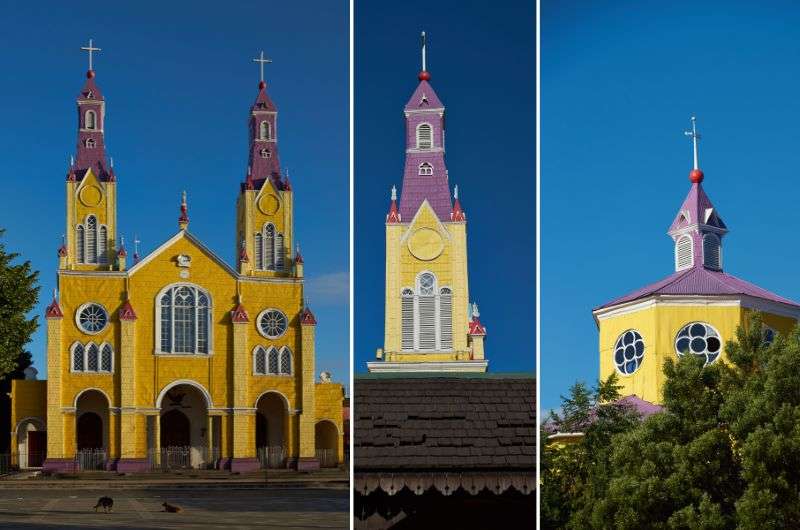
Churches of Chiloé
Funny facts about Chile: things you absolutely don’t need to know (but will love anyway)
11. Avocados are a national obsession
Chileans put avocados (or "palta") on EVERYTHING—sandwiches, hot dogs, even pancakes. Want to bond with a Chilean? Just start talking about how much you love avocado. It’s the key to their hearts and their menus.

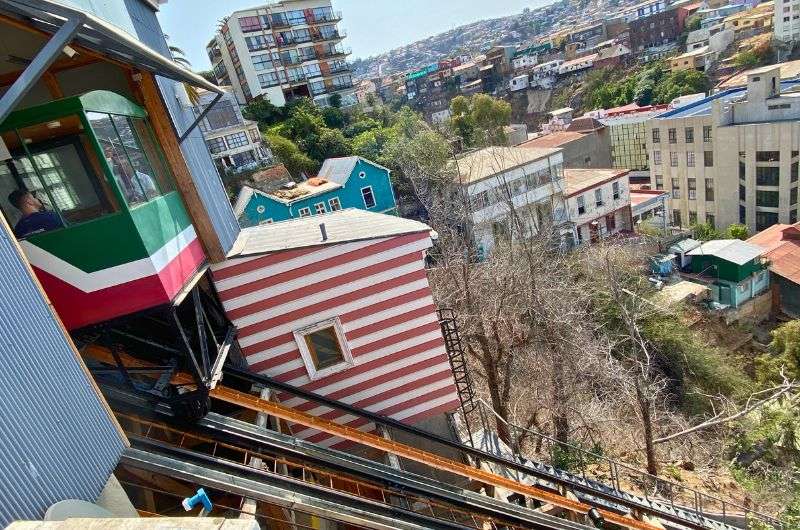
Taking a cable car to get the best views of Chile
12. Chilean Spanish has its own weird rules
If you think you know Spanish, Chilean Spanish might make you think again. As a Spanish speaker myself, I had serious trouble understanding them! From dropping the "s" in words to using phrases like “cachai” (meaning “you get it?”), it’s practically its own language. They even throw in words like “po” at the end of sentences for no apparent reason—just because, po.
13. Chile has an enormous number of stray dogs
I’ve read that Chile has the happiest stray dogs in the world, but to me it just seemed they have a lot of them. Sure, the locals sometimes knit them sweaters in winter, and they get fed by random strangers, but I would be willing to bet the dogs would still prefer to actually live in a home and not the bus stop, the street corner, and that parking lot over there. It wasn’t much different to other countries in Latin America—lots of homeless dogs in public spaces.
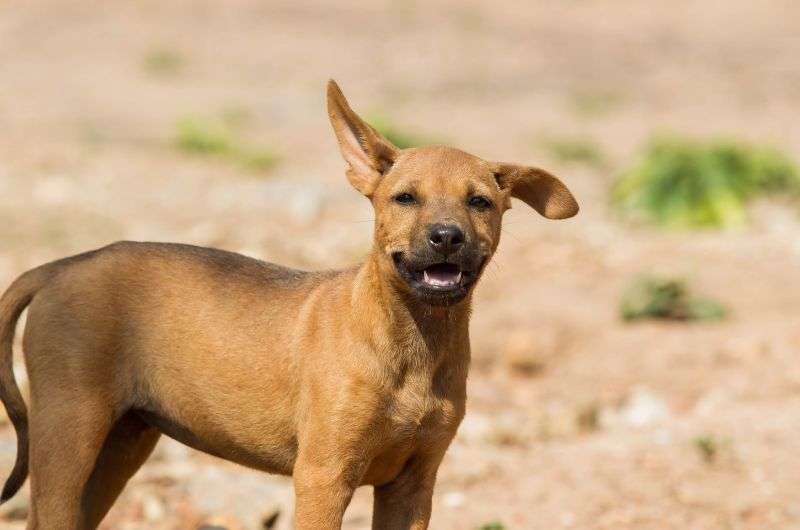
Tell me you wouldn’t want to adopt this good boy?!
14. Chileans measure distances in hours, not kilometers
Ok, this is one funny fact that you probably should know if you’re traveling to Chile: Any time I asked a Chilean how far something is, they’d answer something like, “Oh, it’s about two hours away,” instead of giving an actual distance. It started to make sense after a couple of days: a 50 km drive in flat terrain might take 30 minutes, but when you’re visiting Patagonia, the same distance would take hours due to winding roads and steep inclines. So, trust the locals and their “distance times”.

National symbols of Chile
15. Chile’s stunning national flower symbolizes the Chilean people
Chile’s national flower, the Copihue (Lapageria rosea), is a gorgeous pink, bell-shaped bloom that thrives in the dense forests of southern Chile. It symbolizes the beauty and resilience of the Chilean people and often appears in traditional art and crafts. Spotting one in the wild is like finding a little piece of Chile’s heart.
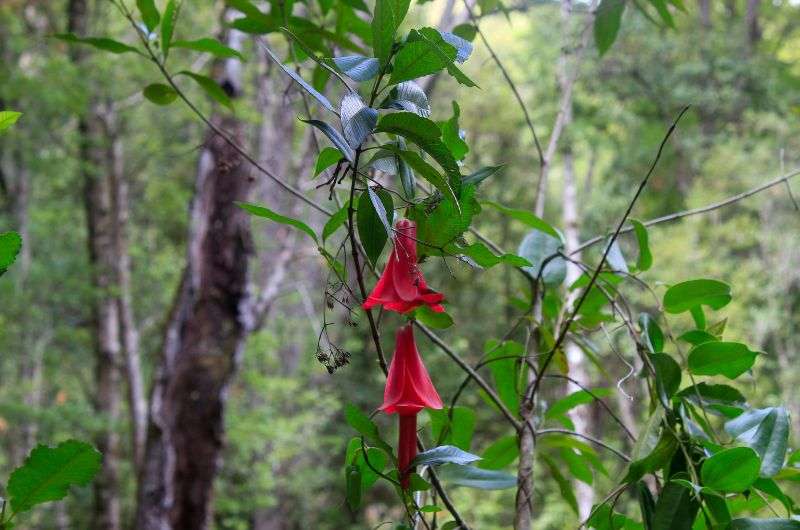
Copihue
16. The huemul is Chile’s elusive national animal
The Huemul, a rare and endangered deer native to the Andes Mountains, is Chile’s national animal. This shy guy shares the spotlight on the Chilean coat of arms with the majestic Andean condor. The huemul symbolizes resilience, independence, and the natural beauty of Chile’s wilderness. Honestly though, even I can attest to that, and I’m not a cute deer. Just saying… they could’ve had me up on the coat of arms too.
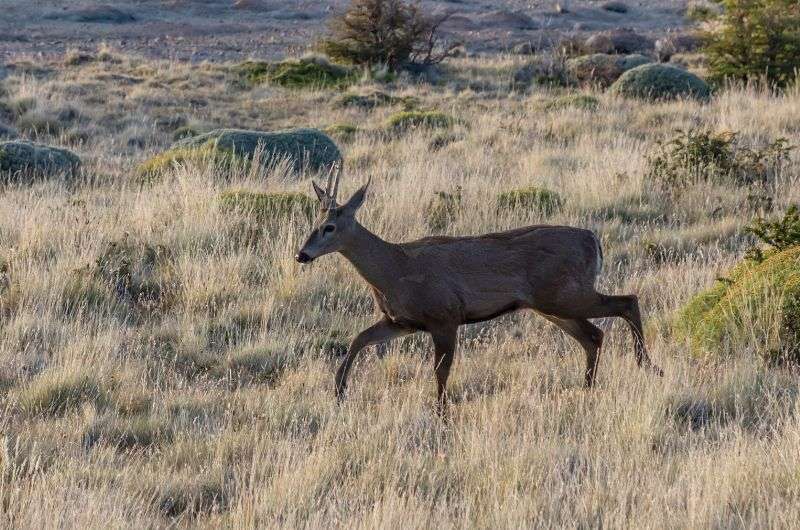
This is what a huemul looks like
17. The Chilean flag didn’t copy Texas
Chile’s national flag often catches attention for its similarity to the flag of Texas, USA. But the Chilean flag came first, officially adopted in 1817, nearly 30 years before Texas even thought of its design. The flag’s colors have the following meaning: the white symbolizes the snowcapped Andes Mountains, the blue represents the vast Pacific Ocean, and the red honors the blood spilled during Chile’s fight for independence.
Chile economy facts
18. Chile is the world’s largest copper exporter
Chile leads the world in copper exports, which are a major contributor to its economy. Fun fact: copper is so important here that locals often refer to it as "Chile’s salary." When I visited the Atamaca Desert, I thought seeing miners and those huge trucks everywhere was really cool.
19. Chile is the 7th largest wine producer
Chile ranks among the top 10 wine producers globally, offering high-quality wine at competitive prices. With over 500 years of winemaking history, the country is especially famous for its bold Carménère wines—a variety nearly lost to the world until rediscovered in Chile!
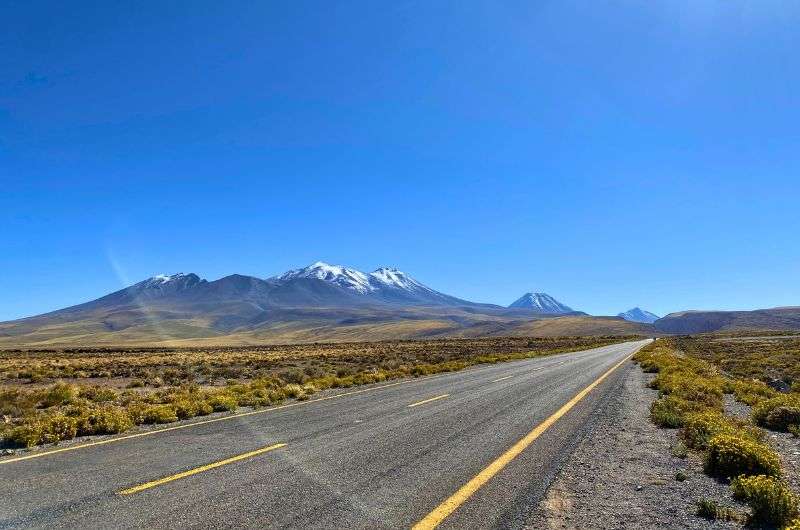
It may come as a surprise to some, but Chile has excellent wine
20. Chile ranks highly in economic freedom
Chile ranks as the second most economically free country in the Americas, after Canada, according to heritage.org. Its stable economy and investor-friendly policies have earned it the nickname "the Switzerland of South America." When people back home ask me if Chile is safe to visit, I think they are imagining a country full of jungles and local tribes running about. The truth is, Chile feels just as developed as the EU and USA. And yes, it is safe.
Facts about the Atacama Desert (Northern Chile)
21. The Atacama Desert is the driest desert on Earth
The Atacama Desert in northern Chile is the driest non-polar place on Earth, known for its extreme desert terrain, with some areas getting less than 1 mm (0.04 inches) of rainfall each year. In fact, parts of the desert have gone decades without measurable precipitation, making it one of the most extreme and fascinating landscapes on the planet.
I wasn’t expecting any kind of life in Atacama, so imagine my surprise when there were plants and critters all around! Everywhere except for the highest altitudes—those had nothing.
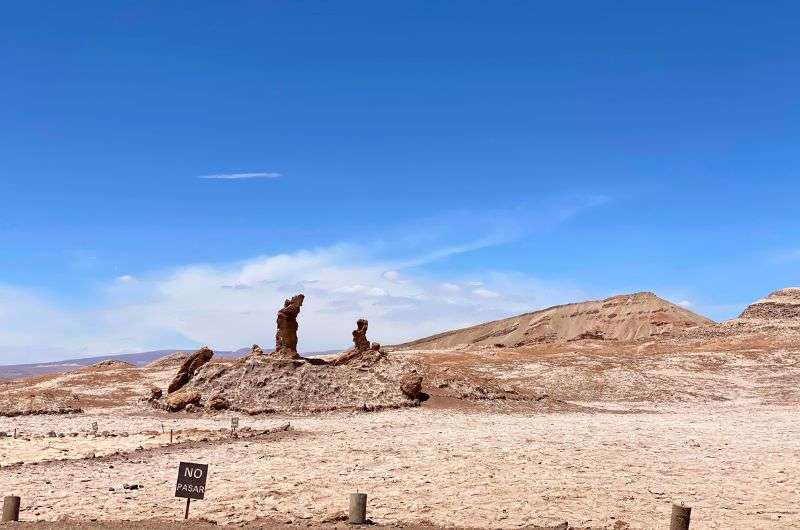
The Atacama Desert
Visit San Pedro de Atacama, the Atacama Desert tourist hub, which is the gateway to this otherworldly region, offering access to dramatic landscapes like Moon Valley, salt flats, and the world’s highest geysers. Who knew the driest desert terrain could be so full of interesting things?
22. Chile experiences many earthquakes every day
Chile sits right in the heart of the Pacific Ring of Fire, a fiery 40,000 km (25,000 mile) zone notorious for its earthquakes and volcanic eruptions. Why? The Nazca Plate is colliding with the South American Plate in slow motion, which keeps things shaking—literally.
The country gets around 7,500 earthquakes a year, or about 20 a day, though most are minor and barely felt.
So, what did I do? I downloaded an earthquake app! I religiously checked it every day to see the tremors that happened close to me. There were SO many! It blew my mind that this was the standard reality of Atacama and nobody really cared. Unfortunately, I never felt anything, so I’m either really unlucky or tremor-proof.
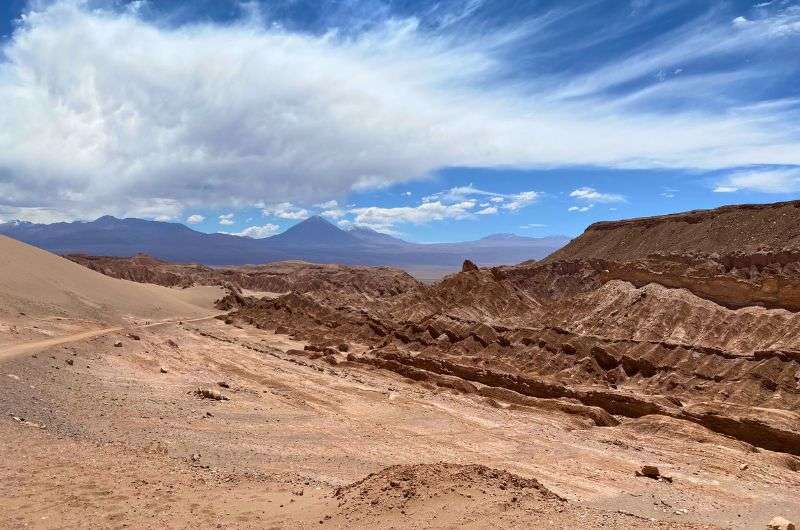
Walk through the desert
23. Atacama struggles with discarded clothes—but I didn’t notice anything
In recent decades, the Atacama Desert has struggled with modern global problems. It has become a huge dump for European discarded clothes, with tons of fashion leftovers covering the dunes further from the tourist places. Honestly, it looked clean to me, and you probably won’t see anything when you visit either. Then again, it’s not like I went looking for the mountain of stuff where 40 million tons of clothes get dumped every year.
Lake District (Northern Patagonia) facts
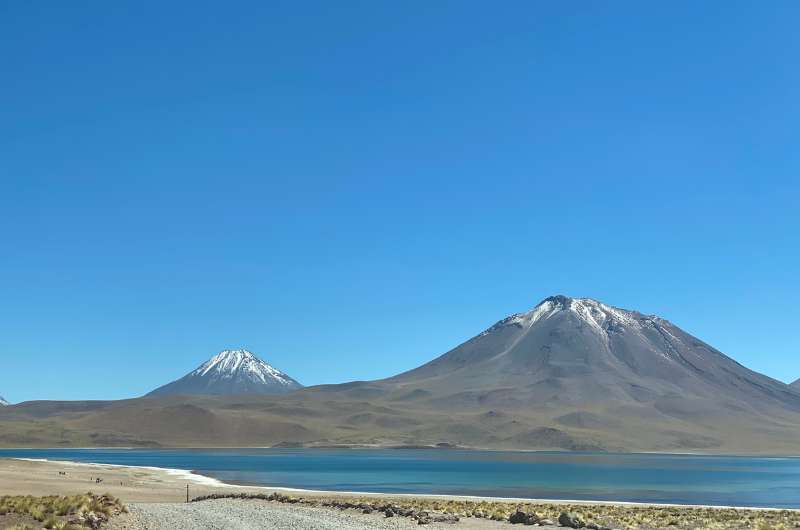
Lake District
24. The Lakes District is full of endemic plants
This region is home to 205 plant species that don’t grow anywhere else on Earth, including 19 superstar species you won’t find outside the Lakes District. Basically, it’s Mother Nature’s private collection—rare, exclusive, and totally worth adding to your Chile itinerary.
25. The Araucaria tree, aka the “monkey puzzle tree” is iconic to the Lakes District
One of the weird reasons I wanted to visit Chile in the first place was the Araucaria tree. I specifically set out to Huerquehue National Park to look for it, and I had no regrets; it feels very otherworldly! Also, rose tarantulas live on monkey puzzle trees so I was hoping one of them would fall on me, but unfortunately that never happened.
The monkey puzzle tree got its name in the 19th century when an Englishman reportedly remarked that climbing the tree would be a puzzling challenge even for a monkey! Its branches grow in a spiral pattern and are covered with sharp, spiky leaves, making it nearly impossible to scale.
Known scientifically as Araucaria Araucana is often called a "living fossil" because it has existed since the time of the dinosaurs.
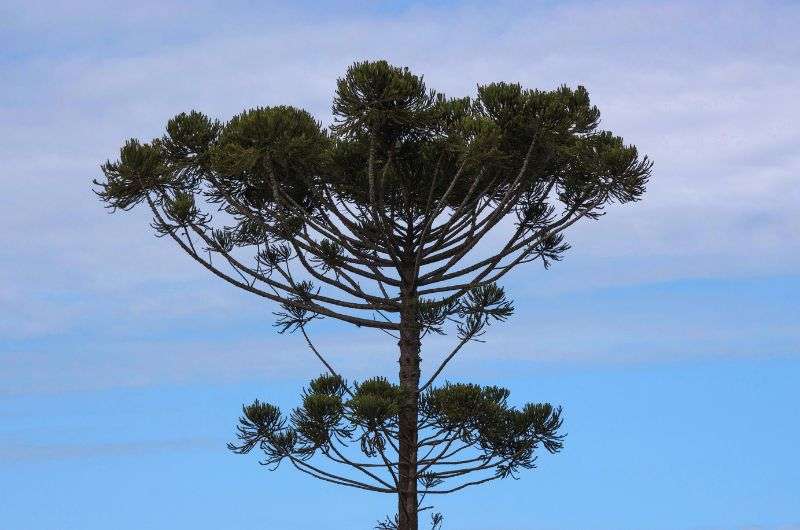
Monkey puzzle tree
26. The Chilean rose tarantula is native to the region
The Chilean rose tarantula (Araña Pollito) is endemic to this area and is the most common tarantula species in pet stores. Known for its docile temperament and unique rose-hued body, this eight-legged local celebrity is surprisingly low-maintenance, making it a popular pick for first-time tarantula owners.
Southern Patagonia & Tierra del Fuego facts
27. Southern Chile has one of the largest non-polar glaciers on Earth
The Southern Patagonian Ice Field spans over 13,000 sq km and is one of the largest non-polar glaciers on Earth. It’s a frozen expanse that feeds many of the region’s most famous glaciers. Especially along the Carretera Austral and in Torres del Paine, you can see glacier fields everywhere, and that’s definitely what left the strongest impression on me in Chile. The glaciers feel absolutely massive. Mountains with mountains of ice on top of them.
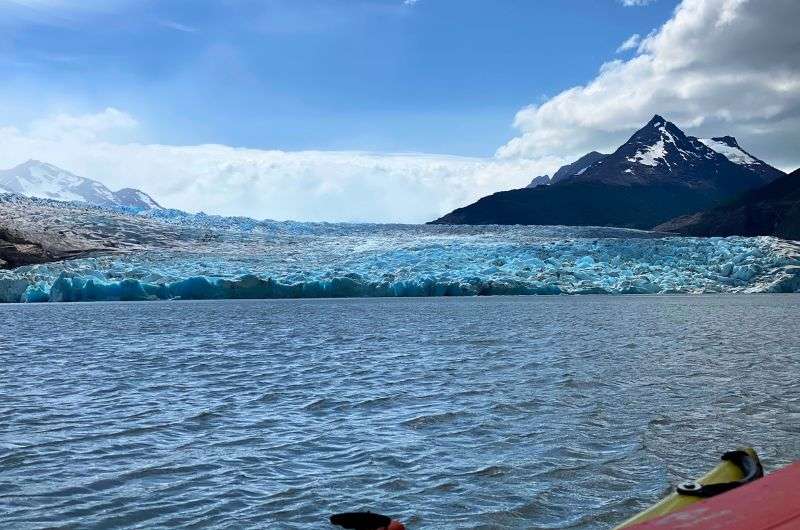
The large Glacier Grey
Tourist info: Access to the Southern Patagonian Ice Field is strictly regulated—particularly on the Chilean side—visits onto the ice itself require permits, specialized guides, and a good deal of logistical planning. But if you’re happy just staring at the edges of it, I recommend a kayaking excursion to Glacier Grey. I've never felt so small in my life!
28. Glacier Gray is part of the Torres del Paine National Park
The visible melting rim of the Southern Patagonian Ice Field surrounds Glacier Gray, a highlight of Torres del Paine National Park. This breathtaking glacier is one of the park’s most visited natural wonders. When I visited the national park, unless you want to hike the W trek, you had to pay for a pretty expensive ferry to even get to one of the Glacier Grey viewpoints. I also hopped on a kayak, which was spectacular!
“How many people visit Glacier Grey, Jan?” I hear you asking. Well, I don’t know exactly... There isn’t a single official figure published for “Glacier Grey visitors” alone. Still, because it’s one of Torres del Paine’s main attractions, you can assume that a substantial share of Torres del Paine’s roughly 250,000–300,000 annual visitors include a trip or hike to Glacier Grey—so my estimate is well over 150,000 people each year end up viewing it in some form. Did that answer your question?
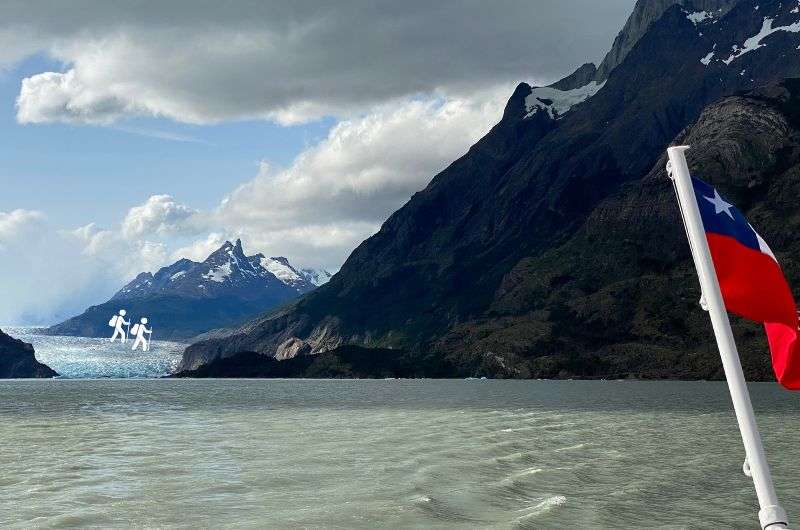
Cruise to Glacier Grey
29. Tierra del Fuego is Chile’s southernmost region
Chile’s southernmost point, Tierra del Fuego, is a rugged land of archipelagos and fjords. Here, the winds grow stronger, and the landscape more dramatic, marking the end of the South American continent.
30. The Magellan Strait connects Chile to Antarctica
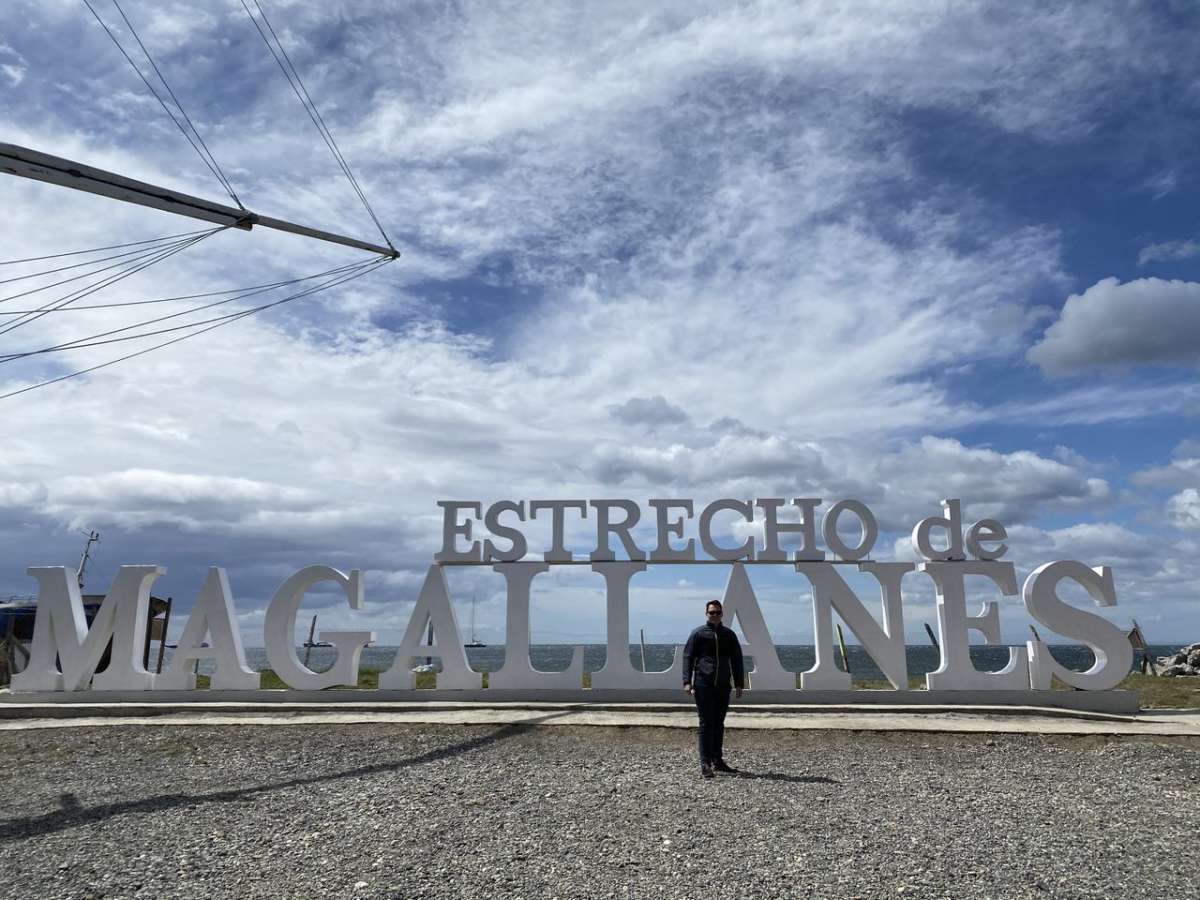
Magellan Strait
The Magellan Strait, part of the Tierra del Fuego region, is a historic waterway connecting Chile to Antarctica. Its strategic location has made it a key route for explorers and adventurers throughout history. And I can tell you that it absolutely feels like the end of the world, with super cold wind coming from the ocean and big, wild waves crashing ashore.
Chile history facts
31. Chile’s first settlers arrived before the pyramids were even a thing
Chile’s history began with tribes living there as early as 12,000 BC, hunting and occasionally fighting among themselves. To put that in perspective, these early settlers were crafting tools and hunting mammoths thousands of years before the first pyramid ever popped up in Egypt.
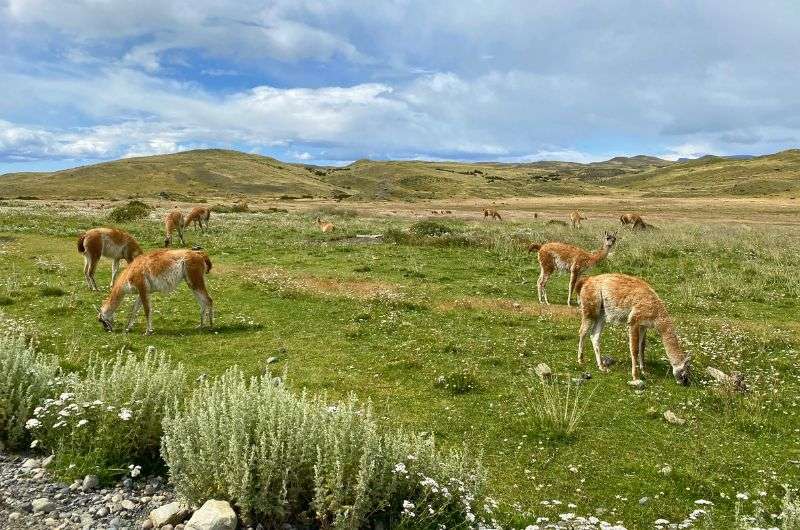
People have been living on this land for a very long time
32. The Mapuche: the warriors who said ‘no thanks’ to the Incas
Between 1471 and 1493, the mighty Inca Empire tried to expand into Chile, but the Mapuche indigenous groups fiercely resisted and stayed unconquered. These warriors became legends for being one of the few groups to successfully stand up to the Incas. I believe this is the reason that Chilean natives feel a lot different from their US counterparts. They are much prouder and give off less "hurt and used" vibes.
33. Chile’s independence: freedom after a hard-fought battle
On February 12, 1818, Chile officially declared its independence after José de San Martín led a decisive victory at the Battle of Chacabuco. Fun fact: the battle was fought just north of Santiago, and the site is now a historic landmark where you can literally walk through Chilean history.
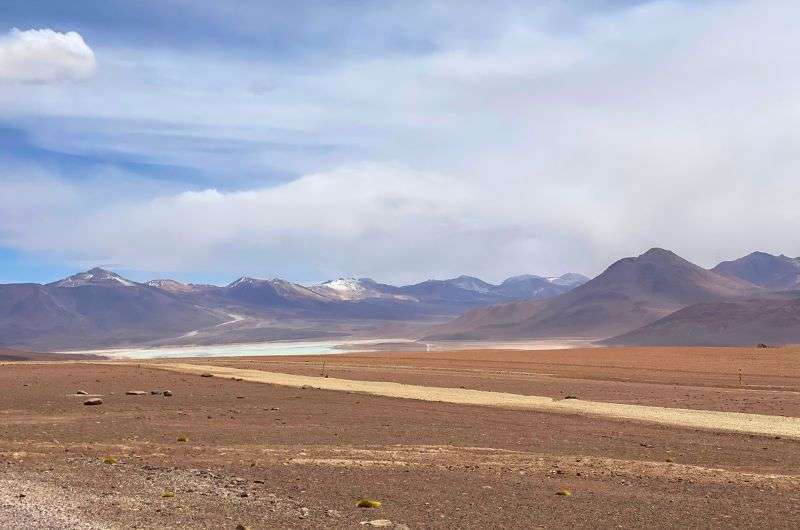
Photo suitable for wallpaper. Good job, Chile and me!
34. Chile fought the Pacific War and gained more than just territory
In the late 19th century, Chile expanded its territory by fighting Peru and Bolivia in the Pacific War. But this war also gave Chile control of rich nitrate deposits, a resource so valuable it was nicknamed "white gold", due to its economic value as a fertilizer and in explosives.
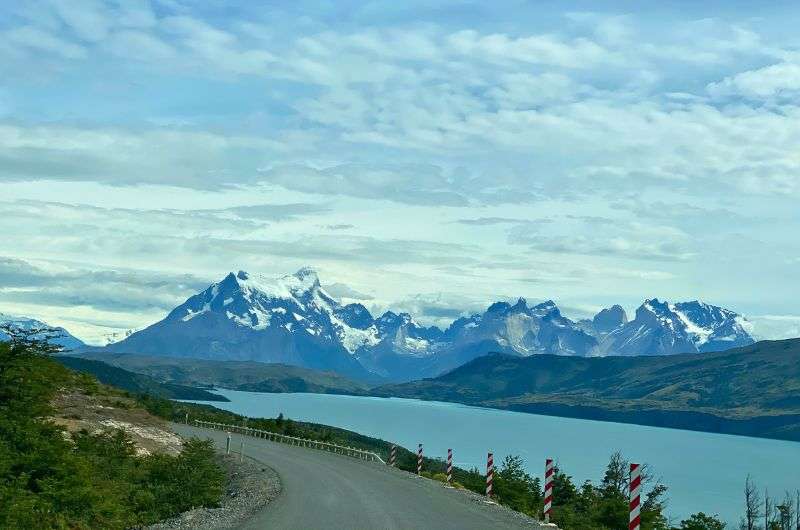
Beauty of Patagonia
This was up until the early 20th century when a new “white gold” saw the light of day…
35. Only governments can mine lithium in Chile
Today, lithium has earned the nickname "white gold" because of its critical role in modern technologies, particularly batteries for electric vehicles, smartphones, and renewable energy storage. Chile is one of the top lithium producers in the world, thanks to its vast salt flats like the Salar de Atacama.
Interestingly, only governments in Chile are permitted to mine this highly valuable resource, ensuring tight regulation of one of the country's most lucrative industries.
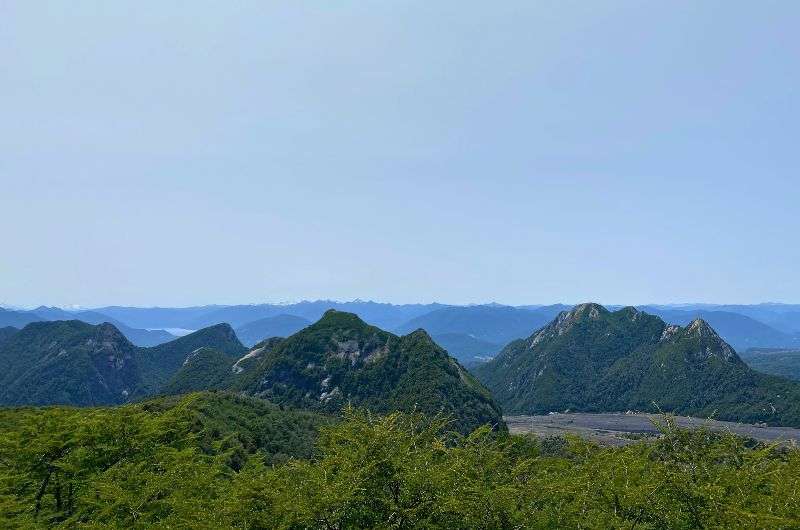
The view of mountains
36. Chile under Pinochet: a dictator’s iron grip
From 1973 to 1990, Augusto Pinochet’s military dictatorship left a complicated legacy, marked by both economic reform and widespread human rights abuses. One chilling fact? More than 3,000 people were killed or disappeared during this dark chapter in Chile’s history.
You can sense Pinochet’s presence when visiting Pablo Neruda’s house in Isla Negra near Santiago (my favorite day trip!), as Neruda’s fate was closely intertwined with the beginning of Pinochet’s regime.
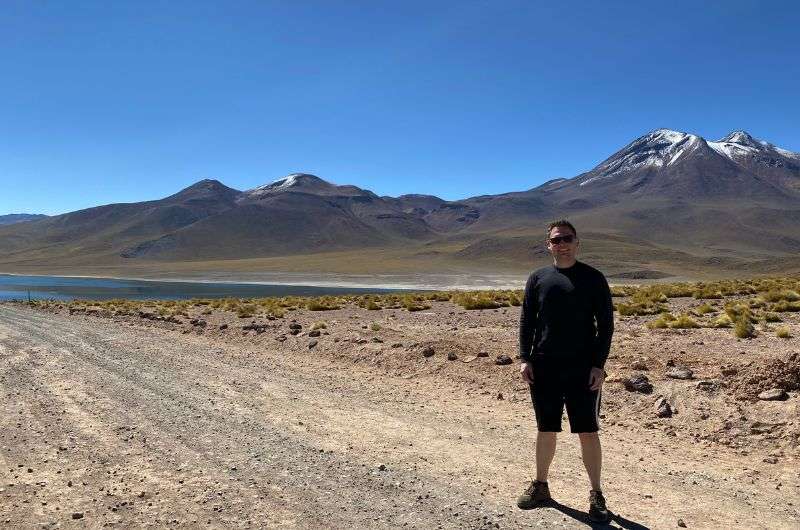
Me, thinking about all the fun facts I have to tell you when I get home from Chile
37. Chile’s return to democracy was a national turning point
In 1989, Chile made its transition back to democracy, electing Patricio Aylwin as president. What’s fascinating is how the peaceful plebiscite of 1988 paved the way for this change—a global example of how a nation can reclaim its freedom through unity and determination.
Unique records in Chile
38. The world's largest swimming pool is made of water from the Pacific Ocean
Located in the resort town of Algarrobo, the pool at San Alfonso del Mar is the world's biggest swimming pool; it stretches over 1,013 m (3,323 ft) and holds 66 million gallons of water sourced from the Pacific Ocean. It’s so massive, people actually kayak and sail on it!
39. Chile has the tallest building in South America
Santiago’s Gran Torre Santiago is the tallest building in South America, standing at 300 m (984 ft) tall. Part of the Costanera Center complex, it’s not only a shopping mall but also offers panoramic views of the Andes Mountains and Santiago from its sky deck. I visited the Gran Torre Santiago and it felt like any other tall skyscraper I’ve been to, though granted, you usually don’t get views of 6,000 m+ mountains from the others.
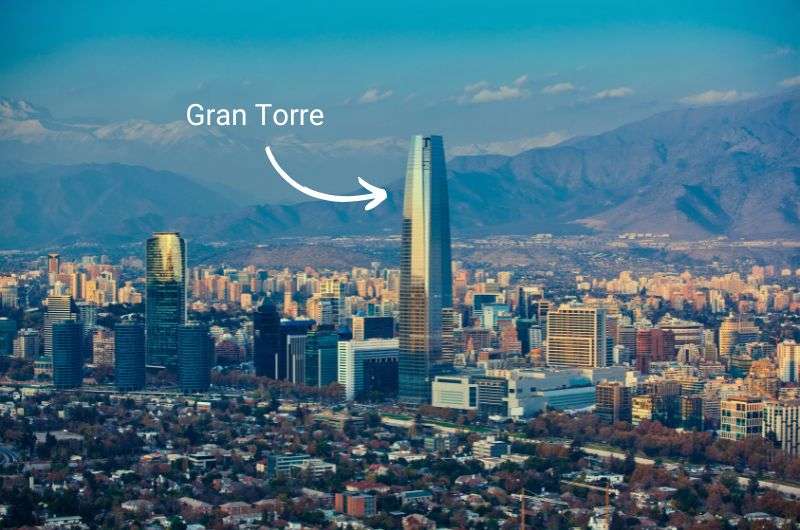
Gran Torre
40. Chile’s mummies beat Egypt by 2,000 years
The world's oldest mummies were found in northern Chile, created by the Chinchorro people over 7,000 years ago—evidence of the region’s long history that predates Egyptian mummification. These fascinating remains were discovered in the Atacama Desert, showcasing the rich history of this ancient civilization. A must (albeit macabre) visit!
41. Move over, Ushuaia: The southernmost town in the world is Puerto Williams
While Ushuaia in Argentina is often considered the southernmost city in the world, Chile claims the title with Puerto Williams, a small town on Navarino Island in southern Chile. This remote settlement is home to fewer than 3,000 people but is the gateway for expeditions to Antarctica.
42. In 1960, Chile shook the world with the largest earthquake ever recorded
In 1960, Chile was hit by the largest earthquake ever recorded, with a staggering magnitude of 9.5 on the Richter scale. Known as the Great Valdivia Earthquake, this seismic giant unleashed tsunami that traveled across the Pacific, reaching as far as Japan and Hawaii. Its impact revolutionized the field of seismology, providing crucial insights into the behavior of massive quakes.
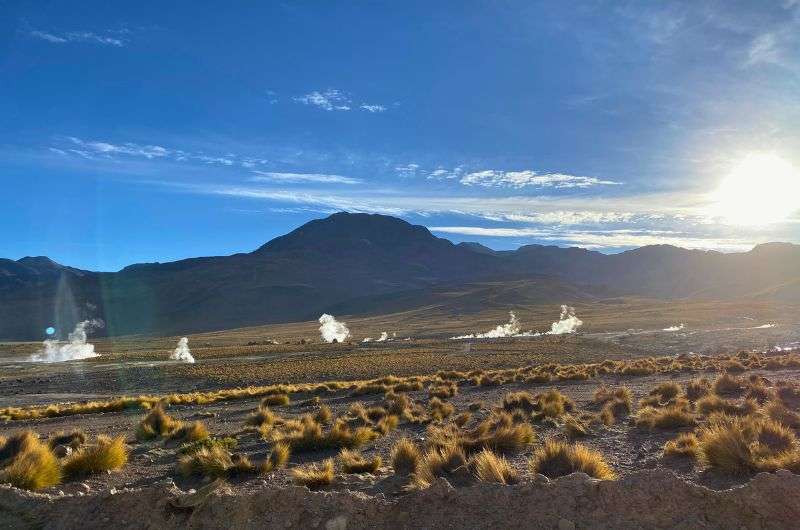
You can also find geysers in Chile
43. Chile is the ultimate stargazer’s paradise
Chile is home to almost 40 observatories, including the ALMA observatory in the Atacama Desert, which houses the world’s largest radio telescope. With some of the clearest skies on Earth, Chile is the ultimate stargazer’s paradise—and a key player in unlocking the secrets of the universe!
Or so they say... I tried visiting the observatory, driving for 2 hours to an altitude of 5,100 m (16,500 ft), only to find it is closed. It was something ridiculous too, like it closed just for the 2 days I was able to drive there or something like that. Lucky me.
Sometimes, all you need to do is take the first step... I've filtered out the best hotels in Chile for you
Save it for yourself to come back to later, or share with your friends on social media!
This post contains affiliate links. I earn a small commission if you make bookings through my links, at no additional cost to you. Thank you for your support!




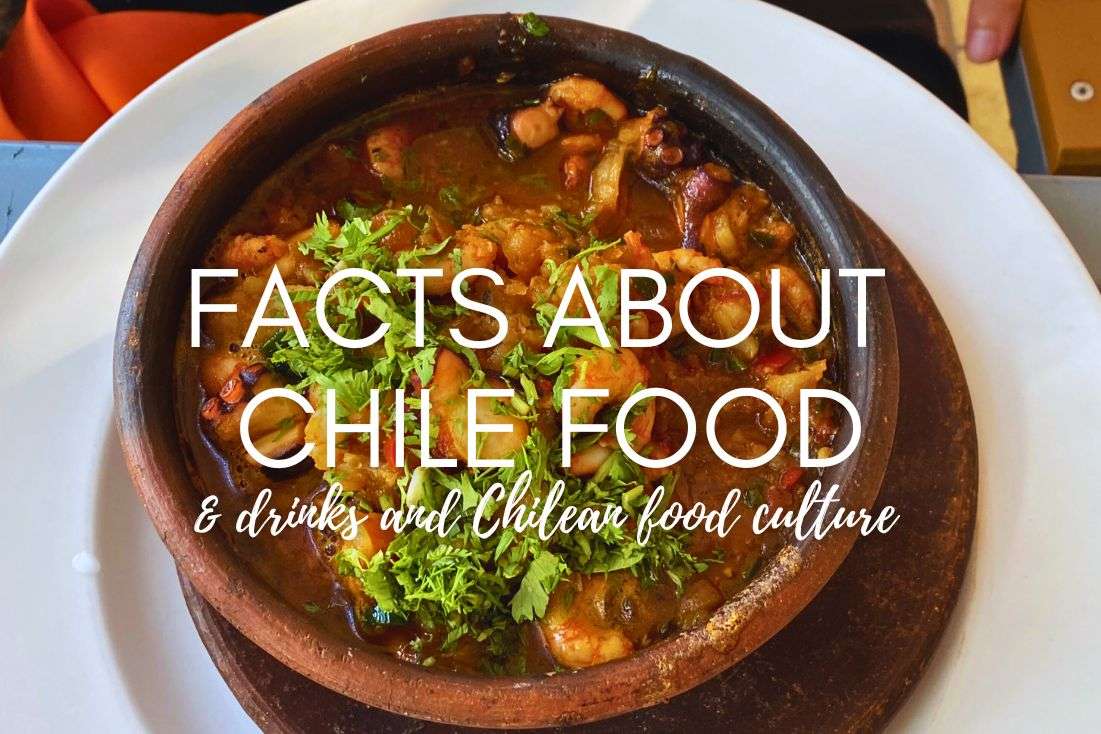
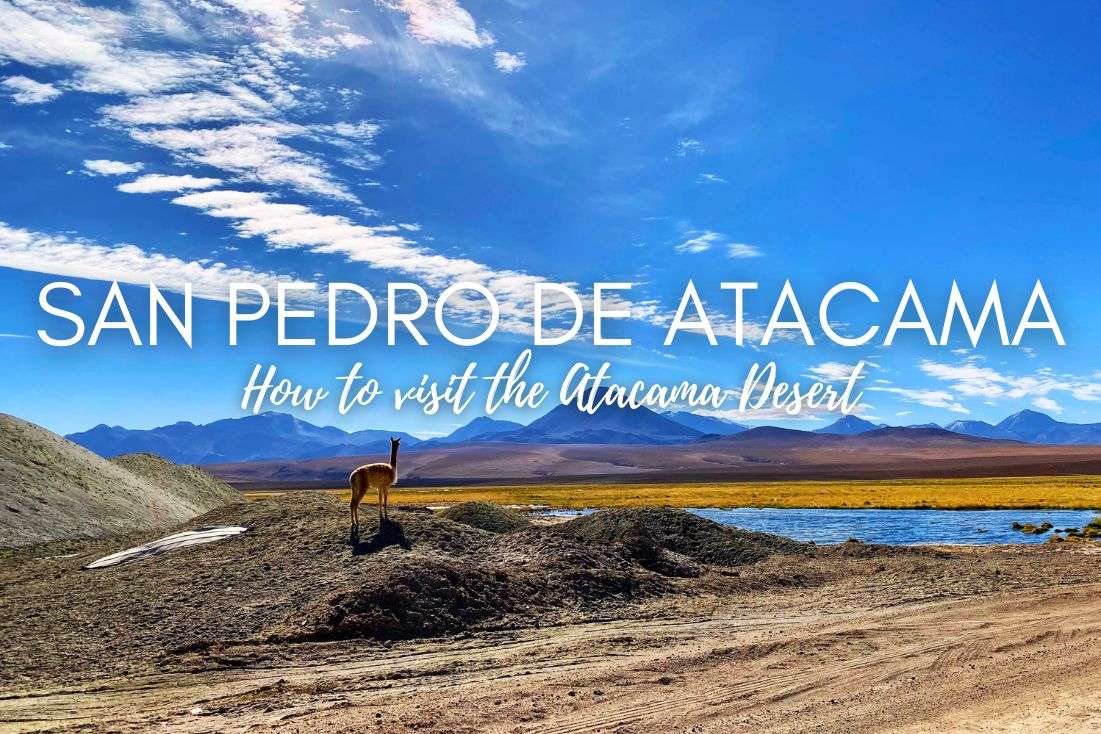
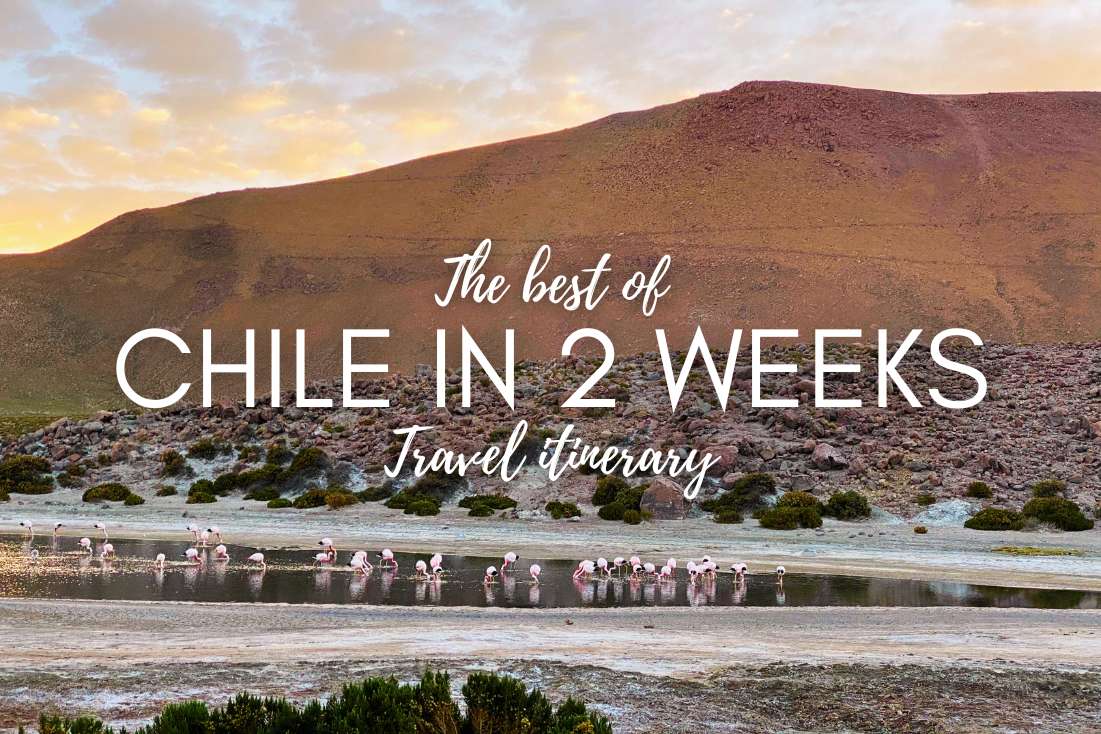



Comments | Thoughts? Give us a shout!